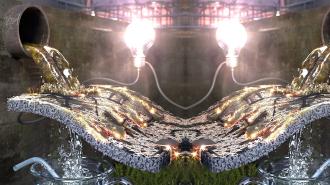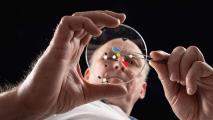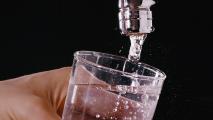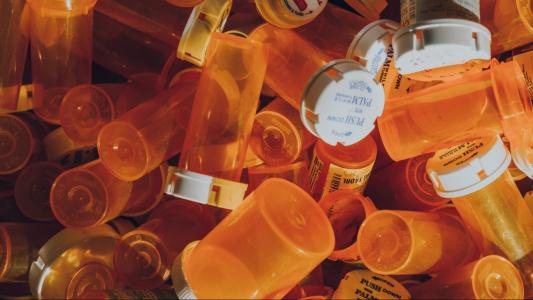It’s a two-birds kind of invention: a membrane that purifies water while it generates electricity.
Developed by researchers at the Korea Institute of Science and Technology (KIST) and Myongji University in Seoul, this new material uses a layer of conductive polymer — an organic material that conducts electricity — and the flow of water to generate continuous electricity.
The team believes the membrane can be relatively easily commercialized, as well as having “great potential applications in the water quality management system and emergency power system,” study author Ji-Soo Jang, senior research scientist at KIST’s Electronic Materials Research Center, said.
Researchers have created a membrane that purifies water while it generates electricity.
Water, water everywhere: Around the globe, 90% of people now have access to basic drinking water services, defined by the CDC as coming from an “improved” water source — generally clean sources like in-home plumbing, protected wells, and rainwater collection — which does not take them more than a half-hour, roundtrip, to obtain.
Even with that heartening statistic, hundreds of millions of people still lack access to safe drinking water and sanitization services — and even those who technically have access still may struggle at times to obtain enough clean water. It’s an issue that cuts across continents and countries: consider the Navajo Nation, whose fight against COVID was complicated by lack of running water.
Researchers are constantly developing new ways to get people potable water. Efforts are underway to make cost-effective desalination tech that takes advantage of the 97% of Earth’s water contained in the seas; to design new tablets that purify water quickly; to destigmatize purified wastewater; and to remove pollutants, like lead and uranium.
What sets the KIST and Myongji effort apart is its attempt to solve two different issues at the same time.
The water filter/power generator is a “sandwich-like” material. At the bottom is the porous membrane used for purifying water; at the top, the conductive polymer responsible for generating electricity.
Hydro power: Described in the journal Advanced Materials, the water filter/power generator is a “sandwich-like” material. At the bottom is the porous membrane used for purifying water; at the top, the conductive polymer responsible for generating electricity.
When wastewater flows through the material, the porous membrane filters out 95% of contaminants less than 10 nm small. That means microplastics and heavy metal particles can be removed. The purification worked across a range of acidity as well, performing well against pH levels from 1-10. The team is currently working to improve the water quality to drinking level.
Much like a hydroelectric plant, the conductive polymer layer takes advantage of the water’s motion to generate electricity. As it flows perpendicularly through the material, it sweeps along ions horizontally. That flow of ions can then be captured for electricity by using electrodes, New Atlas explained. Power is generated continuously, with 10 microliters of water enough to create electricity for three hours. The small prototype topped out at 16.44 microwatts and 15.16 millijoules, New Atlas reported.
Taking it mainstream: According to the researchers, their porous membrane/conductive polymer concoction can be created with a “simple printing process without size restrictions,” and they’re developing their drinking-safe version for a real factory.
The hope is that the material can prove to be a next-gen renewable energy source, the authors wrote, “laying the foundation for effective utilization of polluted water resources.”
We’d love to hear from you! If you have a comment about this article or if you have a tip for a future Freethink story, please email us at [email protected].





